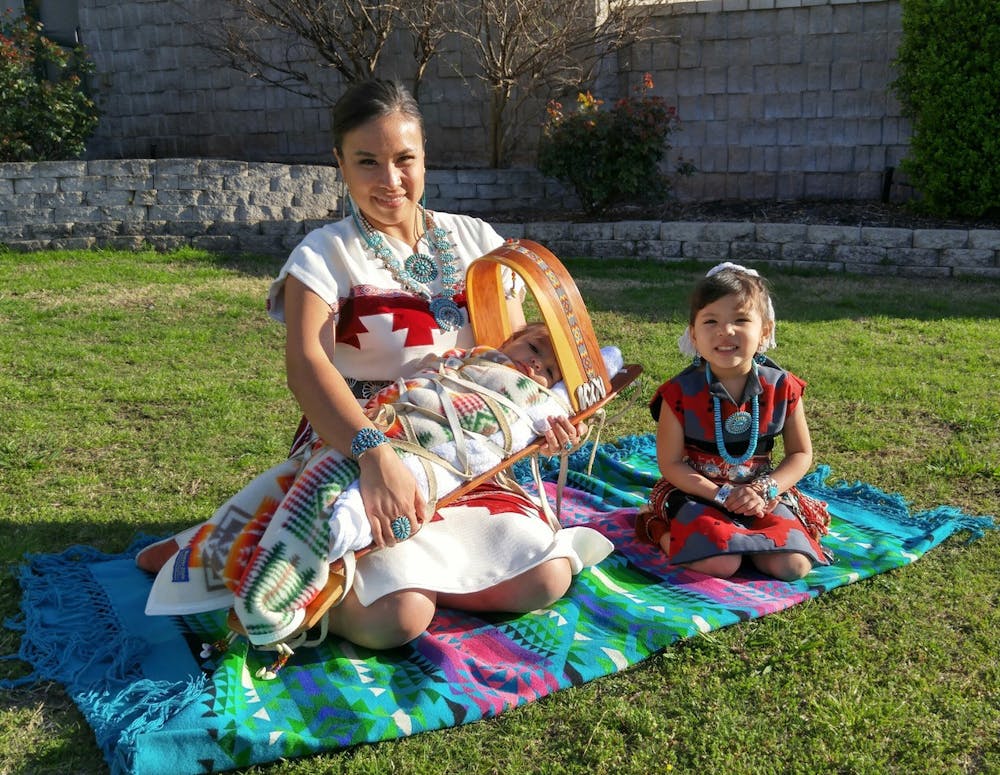The Native American and Indigenous Studies Initiative selected endawnis Spears as its Tribal Community Member in Residence for the 2021-22 academic year to aid Native American and Indigenous students at the University.
Spears is a Diné, Ojibwe, Chickasaw and Choctaw educational advocate who has lived in South County, R.I. for over 15 years. As TCMR, Spears “helps the University better understand the unique needs of Native students” by working with Native students as both a mentor and advisor and educating University administrators about “Native peoples and settler colonialism,” NAISI Program Coordinator Makana Kushi PhD wrote in an email to The Herald.
“My primary reason for being on campus … is to be there in support of the Native students and to provide opportunities,” Spears explained to The Herald.
She added that the Native American and Indigenous community at Brown is diverse in its representation of different tribes and cultures. As someone who grew up within these communities, Spears hopes that she can provide a safe space for Native and Indigenous students.
“It can be laborious to have to educate those who don’t have the same cultures or the same frameworks or knowledge,” Spears said.
NAISI Executive Director Donna Rae Gould wrote in an email to The Herald that Spears’ role at the University is to respond to the “physical, spiritual and mental wellness” of Native American and Indigenous students at Brown. She added that Spears will also focus on creating community within NAISI and connecting the Indigenous community on campus to other tribes such as the Narragansett tribal community.
One way NAISI is helping to create a sense of community for Native and Indigenous students on campus is through weekly dinners every Wednesday, Spears said.
The role of a TCMR was created in 2019 in order to facilitate additional support to students during the development of the Native American and Indigenous Studies concentration, Gould wrote. The Native American and Indigenous Studies concentration is currently in development, The Herald previously reported.
She added that when looking for a new TCMR, NAISI posts the position across many outlets and asks students and faculty to recommend possible candidates. Before Spears, Karen Craddock served as TCMR, Gould added.
Kushi wrote that the position was created to support Indigenous students, saving them time and energy in having to advocate for their own needs in decisions made by administration and staff.
While Spears has not been in the position for long, she believes that it is important for her to recognize the complexity of Indigenous students’ cultural values, many of which are thousands of years old.
She added that there is a “culture of mentorship” between undergraduate and graduate Native and Indigenous students that is “organic” in their communities on campus. While this mentorship was not official within the University, she added, it is a natural product of the cultural values of mentorship from Indigenous communities which many students bring with them to Brown.
Spears acknowledged that Indigenous students at the University study a multitude of fields and said that she wants to empower and encourage students to utilize their Indigenous knowledge when navigating these disciplines.
Spears also helped found and serves as the director of outreach and programming of the Akomawt Educational Initiative, a consultancy group that supports educators and museums. According to its website, the initiative was formed due to a need to “supply regional educators with the tools to implement competent education on Native history and Native contemporary issues.”
Spears said that while working at the Pequot Museum in Ledyard, C.T., she noticed that visiting students would have transformative experiences because of the immersive nature of the museum. Yet, she observed that when these students went back to the classroom, their teachers did not have the tools to further their knowledge on Indigenous cultures.
In addition to helping educators, Spears said that the Akomawt Educational Initiative works with museums to aid in their interpretation of Indigenous history and material culture while also helping museums create relationships with tribal nations.
“We want to ensure that museums and classrooms acknowledge the importance of contemporary tribal nations,” Spears added.
Spears said that her work with the initiative is useful in spaces like Brown. The initiative also provides professional development for museums and organizations on understanding nuanced terminology about Native Americans and Indigenous peoples, which she hopes to bring to the University.
Kaitlyn Torres was the senior editor of community for The Brown Daily Herald's 133rd Editorial Board. She previously covered diversity as a University News section editor. In her free time, Kaitlyn enjoys listening to The Arctic Monkeys and going on archaeological digs.





